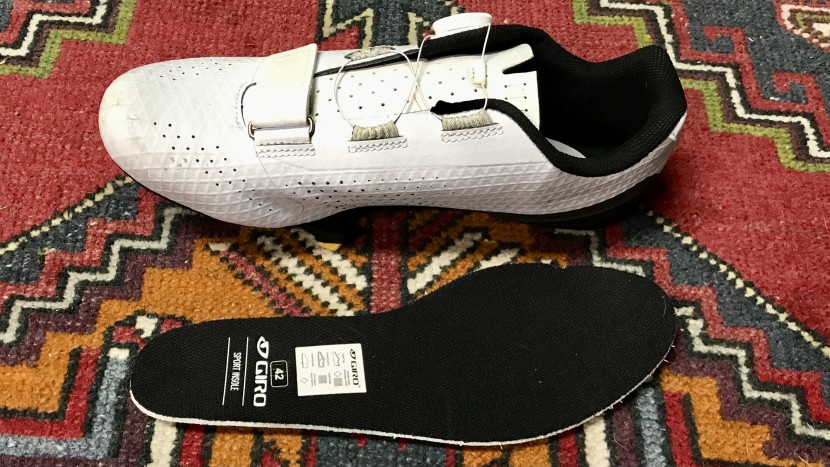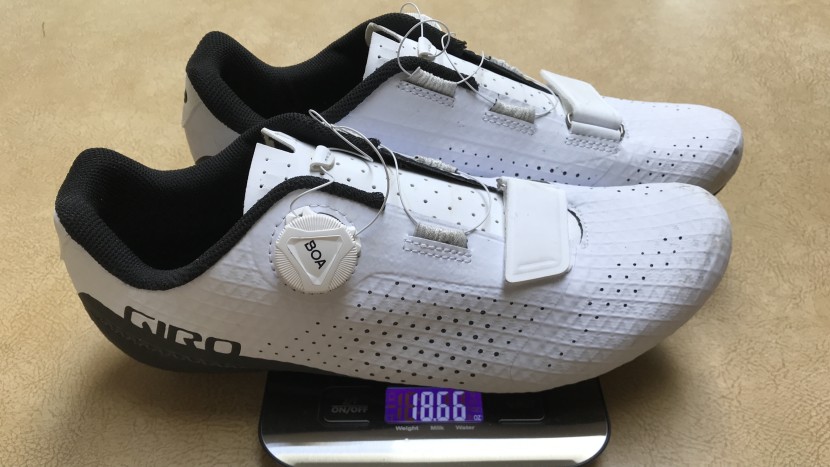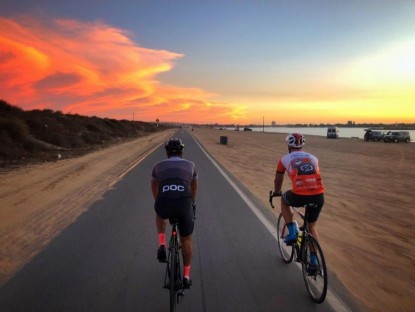Our Verdict
Compare to Similar Products
 This Product
Giro Cadet | |||||
|---|---|---|---|---|---|
| Awards | Great Value for All-Around Performance | ||||
| Price | $164.95 at Backcountry Compare at 2 sellers | $160.00 at Amazon | $109.95 at Backcountry | $100 List $110.00 at REI | $60 List |
Overall Score  |
|||||
| Star Rating | |||||
| Bottom Line | Consistency across all of our testing metrics make this shoe an excellent value proposition | Despite some issues with ventilation and flexibility, this is still a high-performance shoe at a mid-level price point | An excellent all-around option for folks just getting into cycling | If comfort is paramount, this lightweight shoe is an affordable option | An inexpensive and serviceable cycling shoe for a fraction of the price |
| Rating Categories | Giro Cadet | Shimano SH-RC502 | Giro Stylus | Shimano SH-RC100 | Venzo SPD-SL |
| Comfort (35%) | |||||
| Power Transfer (30%) | |||||
| Durability (20%) | |||||
| Weight (15%) | |||||
| Specifications | Giro Cadet | Shimano SH-RC502 | Giro Stylus | Shimano SH-RC100 | Venzo SPD-SL |
| Closures | BOA L6 (one), Hook and Loop (one) | BOA L6 (one), Hook and Loop (one) | Hook and loop (three) | Hook and loop (three) | Hook and loop (three) |
| Width Options | Regular | Regular, Wide | Regular | Regular | Regular |
| Sole Stiffness (millimeter deflection at 25 lbs) | 7.18 | 11.33 | 7.72 | 13.74 | 7.93 |
| Measured Weight (Pair) | 18.66 oz (size 42) | 17.88 oz (size 43) | 18.52 oz (size 42) | 17.21 oz (size 43) | 18.27 oz (size 43) |
| Size Tested (EU) | 42 | 43 | 42 | 43 | 43 |
| Outsole | Carbon-reinforced nylon | Carbon-reinforced nylon | Fiberglass-reinforced nylon | Fiberglass-reinforced nylon | Nylon |
| Outsole Ventilation | None | Toe | None | Toe | None |
| Upper Material | Synchwire synthetic | TPU synthetic leather, mesh | Synchwire synthetic | PU synthetic leather | Mesh, synthetic leather |
| Reflective Hits | Heel | Heel | Heel | None | Heel |
| Cleat Adjustment | 3-Bolt: none; 2-Bolt: 2 cm | +/- 5 mm | 3-Bolt: none; 2-Bolt: 2 cm | +/- 5 mm | None |
| Replaceable Toe/Heel Pads | None | None | None | None | None |
Our Analysis and Test Results
The Giro Cadet inherits many features from its more expensive siblings, offering an outstanding blend of comfort and performance for the price. The easy-to-use BOA and hook-and-loop combo allows for a wide range of adjustments, and the sole is stiff enough to get most of your power down to the pedals. Far from a featherweight shoe, the Cadet seems like it's built to last for years of hard use.
Comfort
When you put on the Cadet for the first time, it isn't immediately as comfortable as some of the other shoes we tested. But the combination of the BOA system over the bridge of your foot and a hook-and-loop strap over your metatarsals makes this shoe highly adjustable. The front hook-and-loop strap provides meaningful adjustment when tightening the shoe down for spirited riding.
The upper is made from something Giro calls Synchwire, a sandwich of monofilament mesh, a non-woven internal sheet, and an outer TPU layer. The upper conforms nicely to your foot, doesn't seem to stretch during hard efforts, and affords decent ventilation. That ventilation is important, as the carbon-reinforced nylon outsole has no ventilation built in. The tongue is made from synthetic leather, which makes a creaking noise when it rubs on the backing of the Synchwire upper. We really only noticed this when putting the shoe on or taking it off, and fortunately, never while riding.
The Cadet is well-padded around the ankle collar and down the tongue. The thickly padded tongue spreads the force from the BOA evenly over the bridge of your foot but can cause a pressure point underneath the hook-and-loop strap. By loosening this strap quite a bit, our lead tester was able to relieve some of the pressure over his instep, but it didn't eliminate it.
Giro employs a BOA L6 dial on the Cadet, which micro-adjusts tighter and pulls out to release all tension. We'd love to have the ability to micro-adjust looser as well because it's annoying to have to loosen the shoe completely, especially while riding, to back off the tension just a tad.
The Cadet comes with the same Giro Sport Insole found in some of their other price-point shoes. Giro advertises this as a “footbed with medium arch support”, but in reality, it is a flat piece of EVA foam with a cloth cap and provides no extra support. It's worth considering purchasing aftermarket insoles that match the arch of your foot – our testers needed to use their personal insoles to maximize comfort on longer rides.
Power Transfer
The power transfer capabilities of the Cadet won't rock your world, but this shoe will do well enough in the occasional impromptu race with a friend or Strava KOM effort. The closure system and relatively stiff upper do a good job of keeping your toes and instep in position, but they are undermined by a weak heel cup. The generous padding seems to compress more and more as you tighten the closure instead of firming up and locking in your heel. The ill-defined heel pocket seems at odds with the security of the rest of the shoe and is certainly the weakest link in transferring your power to the pedals.
Giro is one of the few cycling shoe brands that puts units to their sole stiffness ratings, claiming a stiffness of 80 N/mm for the Cadet. Even so, it's unclear how this is measured. To better rank sole stiffness across brands, we developed our own test so that we could objectively compare the shoes in our test.
Our test involves bolting each shoe to a jig by the cleat mounts, placing a heel block inside the shoe, clamping a U-bolt around the sole, hanging a 25-pound weight from the U-bolt, and using a linear deflection gauge to measure the flexion. The heel block locates the U-bolt over the ankle opening of the shoe, so that force is applied in the same plane as your foot was in the shoe. We performed the tests multiple times for each shoe, then averaged the results to define a sole deflection value.
Impressively, the Cadet outperformed some shoes that are more performance-oriented, but it still doesn't come close to the top race shoes. These numbers supported what we felt out on the road: the Cadet is stiff enough to not feel out of its depth for a set of hill repeats, but it's also not egging you on to go harder with every pedal stroke.
Durability
The Cadet is a relatively burly shoe, which is good because it lacks some of the replaceable components that more expensive options in our lineup include. It doesn't feature a replaceable heel pad, but the fixed one is thick and covers the entire heel. As a result, this shoe does have an expiration date because when that heel pad wears out, the outsole will start to deteriorate quickly.
The BOA dial features a lifetime guarantee – if the dial wears out or the cable frays, BOA will send out a replacement free of charge. The hook-and-loop strap isn't replaceable, so when that wears out, the shoe will lose some adjustability but will still be usable. Fortunately, the durable build of the Cadet leads us to believe that this shoe will likely last for years of regular riding.
Weight
The Cadet weighs 18.66 ounces for a pair of EU size 42 (529 grams per pair, or 264.5 grams for a single shoe), which is easily one of the heaviest shoes in our lineup. The mostly nylon outsole adds significant weight, as do the thick rubber heel and toe pads.
Additionally, the Cadet is 2-bolt cleat compatible, which means Giro added an additional metal cleat nut. This provides riders with more options for what kind of cleats they want to run and makes the shoes compatible with a wider range of pedals and indoor cycling equipment. Still, we don't recommend using the Cadet with a 2-bolt cleat, as the lack of tread and a metal cleat makes for a slippery combination.
Should You Buy the Giro Cadet?
This is a perfect entry-level option for newer cyclists looking for a shoe that will allow them to grow as a rider. Riders at this level will find that the Cadet is more than capable of meeting their needs, able to ride everything from sprints to centuries. Its well-rounded performance, dependability, and relatively low price point make the Cadet a great buy. However, experienced riders attempting to set personal records on their weekly five-hour ride will likely find its performance lacking.
What Other Cycling Shoes Should You Consider?
If you like the well-rounded performance and comfort of the Cadet but are shopping on a particularly tight budget, the Giro Stylus is a great alternative. If the price is right, but your goal is to race or ride hard, the Shimano SH-RC502 offers a more performance-focused fit. If the aesthetic of the Cadet is appealing, but you want a shoe with a bit more power transfer, check out the Fizik Tempo Overcurve R4.















